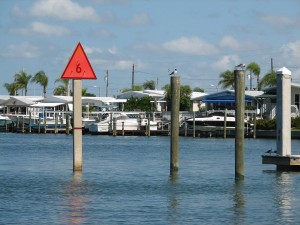Guiding research questions
- What social values and resource uses exist in and around Sarasota Bay?
- How are the social values and resource uses spatially situated across the seascape and differentiated according to user subgroup?
- How can the spatial assessment of social values be utilized (modeled) to the benefit of citizens, decision makers, and policy?
Research objectives
- Modify the terrestrial-based ecosystem service typology to fit a coastal and marine environment, as represented by Sarasota Bay; create a comprehensive list of relevant resource
- Collect spatially explicit stakeholder social values, resources uses, and use perceptions through mapping workshops
- Validate the applicability and usefulness of the SolVES tool in a coastal and marine environment; model spatial value data within Sarasota Bay
Context Description: Sarasota Bay
Sarasota Bay is a coastal lagoon system formed by barrier islands to the west, mainland Florida to the east, and Anna Maria Sound and Venice Inlet to its north and south, respectively (see Figure 1). The ecological landscape of the bay provides an abundant store of natural capital upon which the quality of life and economic success of the region is built. The embayment endows a rich diversity of ecosystem services including environmental regulating processes, social and cultural heritage, high quality water supply, abundant habitat, educational opportunities, commercial assets, and recreational activities, making Sarasota Bay the most important resource base and number one economic driver of the area. Serving as a nursery of over 1,400 plant and animal species the bay system was designated an estuary of national significance in 1987, allowing for cooperative management and goal setting over the past 20 years. Under the National Estuary Program, Sarasota Bay is required to evaluate and plan for the diversity of ecosystem services derived from the seascape.
Geographic facts:
- 455 square mile watershed
- 22,954 surface acres
- 56 miles from north (Anna Maria Sound) to south (Venice Inlet)
- 600,000 residents

